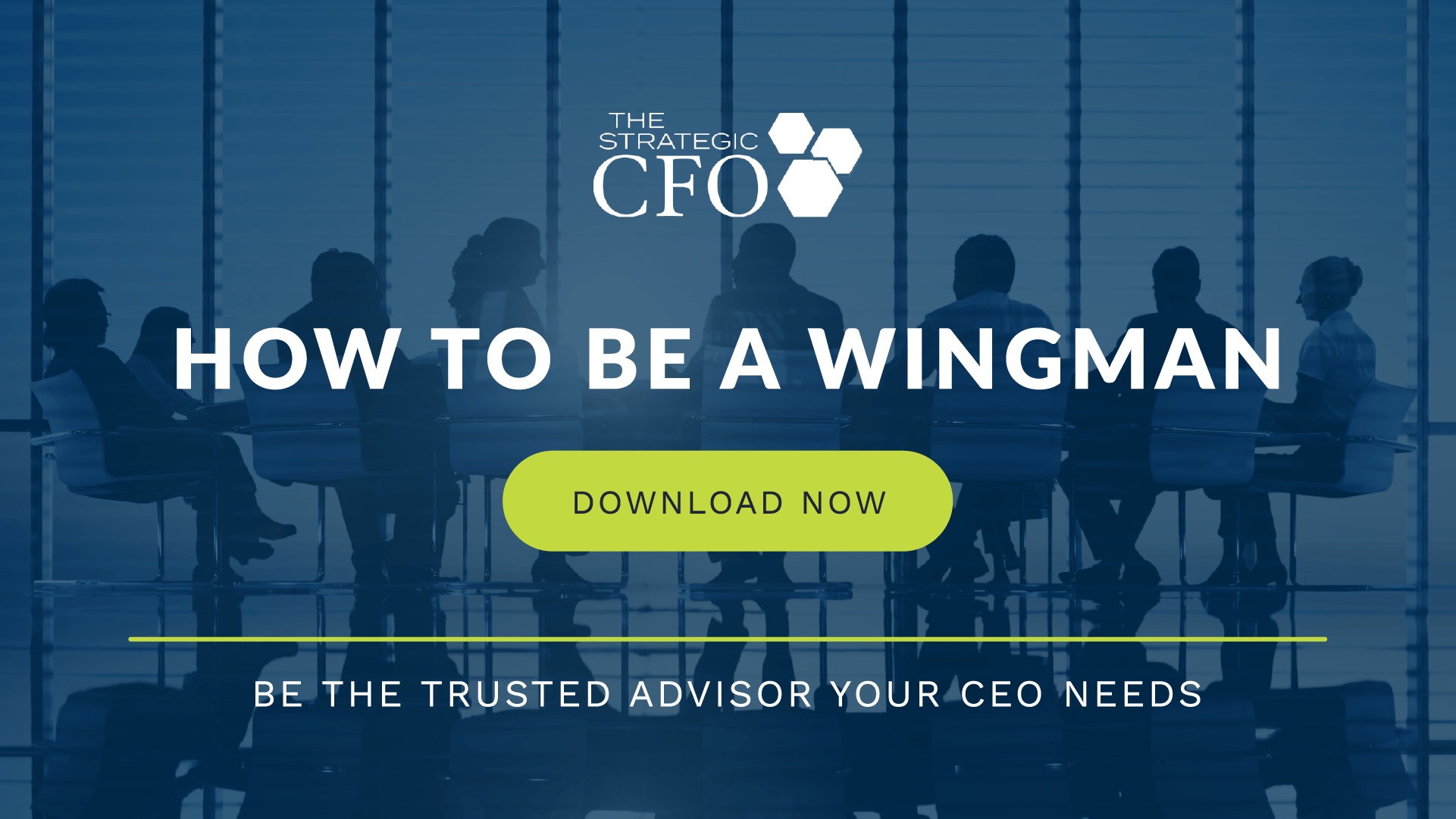Generally speaking, financial-minded people are taught not to take risks. CEOs and sales-minded people are taught to take risks. This stark difference between the two roles (CFO and CEO) can cause friction if not addressed.
Risk can be expected within any organization, regardless of how much due diligence you do. Someone once described risk and uncertainty this way…
 You are a football player and have the ball in your hands. You throw the ball to another player who is wide open. You’ve evaluated and concluded that this is the perfect opportunity to take a risk (letting the ball go) because it’s an open field with a clear path. But unexpectedly, a player from the opposing team comes between you and your teammate. Risk-taking is full of inevitable surprises.
You are a football player and have the ball in your hands. You throw the ball to another player who is wide open. You’ve evaluated and concluded that this is the perfect opportunity to take a risk (letting the ball go) because it’s an open field with a clear path. But unexpectedly, a player from the opposing team comes between you and your teammate. Risk-taking is full of inevitable surprises.
With risk becoming a bigger conversation starter, there is a new role set emerging for CFOs and financial leaders alike.
Risk-Taking
Risk-taking and being a realist are not really compatible. Financial-minded people typically see themselves as realists and, consequently, tend to avoid risk. The challenge is to combine the view through both of these lenses in order to decrease uncertainty from risk and increase opportunity.
Realists
A realist can be defined as someone who identifies things for what they really are. Most CPAs, financial analysts, financial leaders, and CFOs can easily relate to the “realist” role. Realists tend to predict the future based upon past results.
Risk equates to uncertainty. Risk means making assumptions that may not be based upon reality, but on what could be. Realists prefer to deal with the certainty of reality rather than the risk involved with dreaming.
Types of Risk Takers
Like it or not, risk is unavoidable. Everything we do involves risk; whether you’re crossing a road or investing in a risky stock. Since you’re taking risks whether you know it or not, let’s investigate the type of risk taker you are.
Avoider
Have you ever met someone who tries to avoid all risk? This person likes to identify all outcomes and won’t make a decision unless it results in absolute certainty. They take the “cautious approach” too seriously.
The avoider is someone who truly believes that taking any action is the biggest risk. What they fail to see is that refusing to make a decision is a decision itself. By not taking any action, they expose themselves to the whims of fate.
Think back to the emergence of the Internet. There were countless companies that assumed that going on the Internet was a risk because it was a new fad that would eventually go away. Their decision not to take a risk definitely put them at the mercy of early adopters. Avoiding the elephant in the room will not make it go away.
Mitigator
A mitigator typically does not take any risk unless he or she has compiled and vetted a significant amount of research to rule out any uncertainty. This type of risk-taker is only one step removed from the avoider, and is subject to the same consequences from their inaction. But for those who do not have the experience or wherewithal to make a snap decision, this is may be their comfort zone.
Manager
Like any typical manager, a risk manager simply knows what’s going on. What often separates the mitigator from the manager is experience. Since they’ve had experience that the mitigator might not have, a risk manager is better equipped to make a quick judgement call when evaluating risk. They are a lot more comfortable in their decision-making and risk-taking roles.
Embracer
 Some people simply enjoy jumping out of airplanes, going all in at the poker table, or quitting their nine-to-five to start a company. There’s a certain aura around entrepreneurs that just screams “RISK!” To financial leaders, risk means bad.
Some people simply enjoy jumping out of airplanes, going all in at the poker table, or quitting their nine-to-five to start a company. There’s a certain aura around entrepreneurs that just screams “RISK!” To financial leaders, risk means bad.
An embracer typically seeks high-risk for a high-return. They don’t do a whole lot of research before they act. The embracer can be compared to an adrenaline junkie, or someone who does crazy, dangerous things for the adrenaline rush.
The risk-embracer is at the extreme end of risk-taking.
 What type of risk-taker should I be?
What type of risk-taker should I be?
As with everything, it’s important to find a balance between the two extremes. Do avoid dangerous risks. Do recognize that there is going to be uncertainty in your actions. Do embrace calculated risk-taking.
As a financial leader, your job is not to avoid all risk, but to help your CEO calculate risk, have their blind side and determine the best course of action. In short, it’s to be their wingman. Learn more about how to guide your CEO as a trusted advisor by downloading your free guide on How to be a Wingman.
Enable Your CEO
Enabling your CEO is simply the most important part of your job as a wingman. CEOs generally like to take risks. CFOs generally avoid risks (which begs the question, can a CFO be a CEO?). Your job is to help your CEO calculate the risks. And I know you’re good at calculating…
Embracing risk isn’t always easy or comfortable, but creating a controlled environment will allow your CEO the creative freedom they need while still giving you a measure of certainty.
Risk Management and Control
So how do you create this “controlled environment”? Through risk management and risk control.
Business Insider defined risk management as a practice of “creating economic value by the qualitative and quantitative identification and measurement of risk sources and the formulation of plans to address and manage these risks.” Risk-taking is an expected function that a financial leader has to manage.
They defined risk control as a “support function for financial risk takers and risk managers… [involving] the measuring and monitoring of risks versus pre-determined limits…”
In order to bridge the gap between the realist (You) and the risk-taker (your CEO), you need to re-examine your role.
The Emergence of a New CFO
 Over the course of the past 25 years, I’ve spoken with hundreds, if not thousands, of CFOs, Controllers, and financial-minded people (financial analysts, accountants, bankers, CPAs, etc.). When I tell them that I work with entrepreneurial companies and that I’m an entrepreneur myself, they begin to get nervous. Why?
Over the course of the past 25 years, I’ve spoken with hundreds, if not thousands, of CFOs, Controllers, and financial-minded people (financial analysts, accountants, bankers, CPAs, etc.). When I tell them that I work with entrepreneurial companies and that I’m an entrepreneur myself, they begin to get nervous. Why?
Dr. Brené Brown, research professor at the University of Houston, studies vulnerability, courage, worthiness, and shame within people, relationships, and organizations. She concisely puts it, “vulnerability is basically uncertainty, risk, and emotional exposure.” Taking risk in financial decisions or business decisions or even personal decisions is exposing yourself to uncertainty, more risk, and emotional exposure.
Today’s CFO cannot just be the person who always plays it safe. To stay relevant it’s important to become more than an number-crunching realist.
Manage and control the financial risk of your company by being a wingman to your CEO. If you’re interested in becoming the trusted advisor your CEO needs, download your free How to be a Wingman guide here.

[box]Strategic CFO Lab Member Extra
Access your Projections Execution Plan in SCFO Lab. The step-by-step plan to get ahead of your cash flow.
Click here to access your Execution Plan. Not a Lab Member?
Click here to learn more about SCFO Labs[/box]











